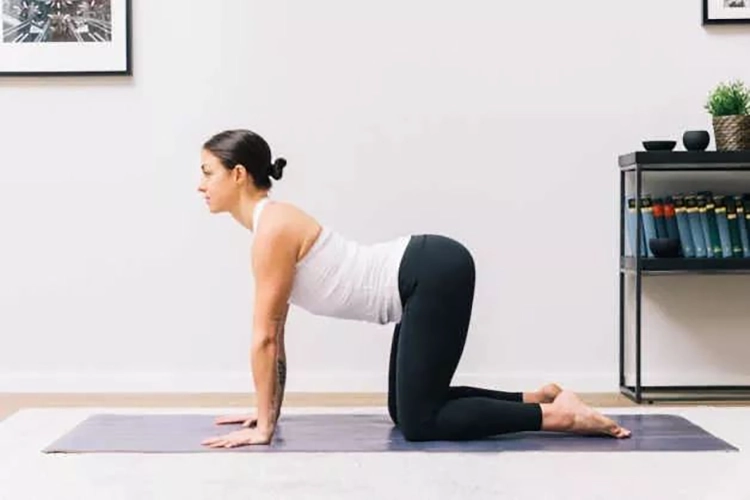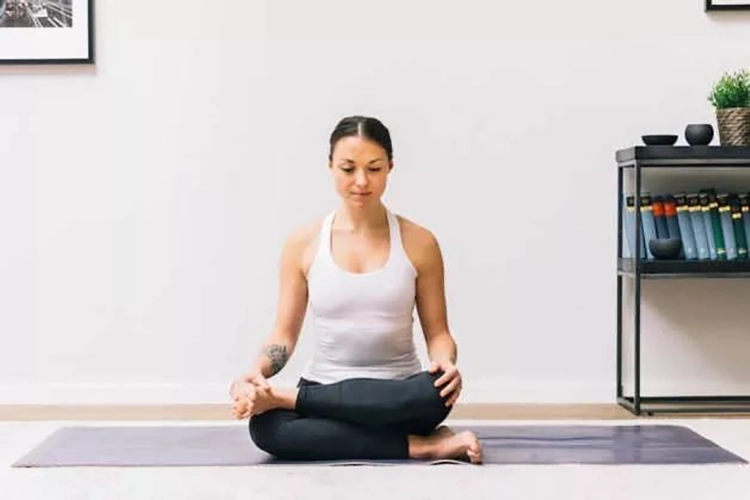Some people like to practice Yin yoga because the word Yin sounds like it can make a person soft enough to perform more difficult asanas.
Others like Yin yoga because they feel less “tired” and can finish a class after a few asanas.
What in the end…
What is Yin yoga?
Yin yoga is a slow, soothing style of yoga in which the muscles of the body are relaxed and the body is held in one pose for a long time, relying on gravity to open the joints and connective tissues of the body. We generally hold postures for about three to five minutes to penetrate deep into the connective tissues, bones, joints, fascia and ligaments of our body. Emphasizing the relaxation of the whole body, clearing all distractions and incorporating slow, natural breathing, exercises the bones and their connective tissues, regulates the nervous system, and builds endurance to achieve a state of mind-body unity.

The main points of Yin Yoga practice:
1. Muscle relaxation
2 Open up joints and connective tissue
3 Hold for a long time
4. Breathe slowly and naturally

Why let the muscles relax?
Yin yoga aims to open up joints and connective tissue. Joints are deep tissues in the body, and muscles are attached to the joints around the joints, muscle tightening can play a role in stabilizing the joints, and only when the muscles relax, the joints have a chance to open.
Why open up joints and connective tissue?
In our body, there are capsular joints around the joints, joint cartilage on the joint surface, and the space formed by the capsular joints and articular cartilage is the joint cavity, which contains synovial fluid.
As we can see, there is a synovial layer in the inside of the joint capsule. Through sports, the synovial layer secretes synovial fluid to nourish the joint cartilage, and the joint cartilage gets nutrients and produces hyaluronic acid to collect water for the body. The surface of the joint cartilage will become smooth to reduce the friction between neighboring bones and buffer the vibration caused by sports.

If you always feel restricted in your physical movement or joints bounce during yoga practice?
This is a sign that your joints are producing less synovial fluid and your cartilage is rough, which can cause pain when you move your joints. This can also lead to degenerative arthritis.
The practice of Yin yoga will open the joints and fully secrete the synovial fluid, creating space for the body to move and preventing the aging of the joints.
Why hold it for a long time?
We often talk about relaxing a certain part in yoga practice, but people who are weak in awareness will not find the feeling of relaxation.
Therefore, it takes time for the muscles of the body to relax, and the practice of Yin yoga also takes some time for the awareness to reach the deep muscles and connective tissues, so it should be maintained for at least 3 minutes.

Also, as the pace of practice slows down, you will feel where the body is starting to fight back.
Often when we feel uncomfortable, our body naturally becomes tense and uses our avoidance response. If there is tension and resistance in a certain area, we know that the joint is not open in that area, and Yin yoga teaches us to make changes.
When we stay in asanas for a long time, our body and emotions are extremely sensitive and it takes time to get used to it. Throughout the practice, the mind will remain relaxed and will be able to release tension and stretch your connective tissue more easily.
Why focus on the rhythm of your breathing?
In Yin yoga, we use abdominal breathing in the lower abdomen to relax the muscles of the body and help the body slowly go deeper into the pose as we exhale, allowing more energy to flow back and forth in the pelvic cavity to help open the joints.
In the environment with the accelerated pace of modern life, people under high pressure will resist and even be irritable when they first practice Yin yoga, and their hearts are not calm.
With the deepening and understanding of Yin yoga practice and learning to breathe steadily, your heart is calm at this time, and the pressure will naturally reduce and disappear.

Practice Yin yoga to keep our body healthy, more importantly, exercise the peace of mind, so that the body and mind, inside and outside to achieve balance.
Observing the breath allows us to better focus on the present moment and the body.
When the breathing starts to wobble, you need to pay attention to whether the body has gone into overload position, so let’s move back a little bit and feel the breathing even, slow, steady and deep.
Yin yoga requires practitioners to go deep into the experience, during the practice process, we have a lot of time to meditate on ourselves, focus our consciousness on the present moment, each Yin yoga is a wonderful journey of body and mind.
Recommend 9 Yin yoga exercises
Today, I recommend 9 Yin yoga exercises, which can not only effectively relieve lower back pain, but also stimulate the nervous system, help the body decompress and detoxify, and keep young. Let’s take a look:

1. Easy sitting + meditation + side bending
Sit with your hands on your knees
Inhale, straighten your spine, and exhale, relaxing your body
Sit down, close your eyes and meditate for 5-8 minutes, then slowly open your eyes

Lift your hands sideways and exhale to your left
Leave your left hand on the mat and lift your right hand above your head
Hold for 1 minute and switch to the other side

2. Hang
Stand in mountain pose with your feet open hip-width apart
Inhale to lengthen your spine, exhale to completely release it
Lower the head of the spine down section by section
With your hands around each other’s elbows, beginners can bend their knees slightly and hold
for 1-2 minutes

3. Squat
Stand in mountain pose with your feet open slightly larger than your hips
Tip your feet outward and inhale to extend your spine
Exhale and squat down with your elbows against your inner thighs
Keep your hands together and hold for 1-2 minutes

4. Hero forward bend
Stand on your knees on a cushion with your feet together
Spread your legs slightly wider than your hips
Inhale to extend your spine and exhale to bend forward and downward
Lie on your stomach on a cushion with your forehead on the ground
Hold for 1-2 minutes

5. Cat-cow pose
Stand on your knees on the mat with your thighs and arms on the mat vertically
Inhale the head of the cervical vertebra, thoracic vertebra, lumbar vertebra section by section
extension
Exhale and turn your pelvis back
Extend your lumbar, thoracic, and cervical vertebrae section by section
Repeat the exercise for 3-5 sets

6. Square form
Sit and stand on a mat with your left foot on your right thigh
Place your right foot just below your left knee
Inhale to extend your spine and exhale to slowly bend forward and downward
Hold for 2-3 minutes and switch to the other side

7. Butterfly pose
Sit and stand on a cushion with your feet together
Open your legs out and inhale to stand up and straight your spine
Exhale slowly bending forward and down
Hold for 2-3 minutes

8. Sit in corner pose
Open your feet the appropriate distance
Inhale to straighten your spine and exhale to release
Bend your body forward and down with your hands on the cushion
Hold for 2-3 minutes

9. Reverse arrow pose
Lie on your back with your hips and legs against a wall on a cushioned surface
Keep your hands at your sides
Close your eyes and hold for 3-5 minutes

